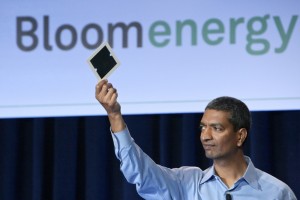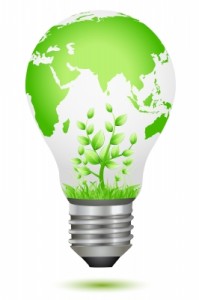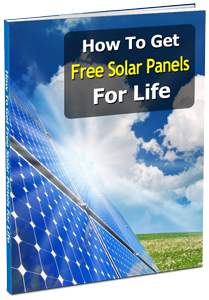We’ve often heard of green energy technologies such as solar, wind power and geothermal as being the answer for our energy independence for the future. Technology has brought us even further in revolutionizing how energy is generated for homes and businesses. The Bloom Box is just that – a step beyond solar, wind, geothermal and other emerging energy technologies. Just one Bloom Box with enough energy cells can fuel a home, part of an educational campus or even a business. Enthusiasts are anticipating that the Bloom Box will be the wave of the future for green energy generation for residential and commercial properties.
Creator of the Bloom Box
Originally designed for living on Mars, the Bloom Box was modified for use on Earth by Bloom Energy. Bloom Energy is located in Sunnyvale, California led by CEO KR Sridhar, former Director of the Space Technology Laboratories at the University of Arizona. Their original model was intended to be used on Mars. However, when the Mars space programs were cancelled, the company modified the Bloom Box to be used on Earth for both residential and commercial energy generation.
Contents of the Bloom Box
One might also think that the bloom box is small and would fit neatly on a windowsill or front-deck railing. The Bloom Box is actually stacked with fuel cell wafers that produce electricity from natural gas, bio-gas, ethanol or a variety of other traditional fuel sources. The cells are packed sand, baked in layers to create each fuel cell. Each of these fuel cells stack on top of one another inside each Bloom Box Energy Server.
The more cells within the box, the more energy the box is capable of generating. Currently, hundreds to thousands of these energy producing fuel cells are stacked into Bloom Box Energy Servers to generate enough electricity for the needs of their customers. These initial Bloom Box Energy Servers are large enough to fill a parking lot. The company’s goal is to improve the efficiency of these individual fuel cells, so that the footprint can be reduced significantly to the size of an average home’s dishwasher or refrigerator.
Media Rage over the Bloom Box
What is so special and wonderful about the Bloom Box concept? The key factor to the Bloom Box is that it’s literally a miniature power plant that can be used to generate electricity for residential and business needs.
Environmentalists and others concerned about green living and global warming are impressed because the Bloom Box doesn’t give off any carbon emissions. Homes and businesses can use it to power brick-and-mortar facilities without leaving carbon footprints. Additionally, the energy efficiency of the Bloom Box can provide substantial energy savings over their lifetime and the flexibility of using a variety of fuel sources allows users to power the unit with the most locally or inexpensively available fuels.

Some day these small wafers may fuel our homes and businesses...
Current Users of the Bloom Box
Currently the Bloom Box is not sitting on the shelves of the local large superstore or next to household appliances. However, due to it’s huge potential to provide efficient and low emission energy, some large companies, such as Wal-Mart, Google, Staples and Ebay are using Bloom Boxes on a trial basis to help fuel part of their green energy initiatives and reduce carbon emissions. It is even believed that Apple Computer is using an array of Bloom Boxes to fuel it’s massive data center in North Carolina.
Cost of the Bloom Box
While a Bloom Box in every home and business would get rid of power lines, power grids and greatly reduce carbon emissions, the technology is expensive. One of the Bloom Box Energy Servers large enough to fuel an average-sized household would cost literally thousands to hundreds of thousands of dollars. Cost of operating the Bloom Box is also very expensive. The average U.S. household cannot afford this type of technology to power their homes. Many businesses (such as local malls) cannot afford the high-price-tag that comes along with purchasing and operating Bloom Box Energy Servers, yet…
In a 60 Minutes television interview, the CEO of Bloom Energy, KR Sridhar stated that they have a 10-year plan to get the cost of each unit down to a couple thousand dollars to make it affordable for every business and home owner in the United States to create their own power generation with their green energy producing, Bloom Box. It will be exciting to see if they can deliver on such an ambitious promise.



All solid oxide fuel cells use rare earth elemets as a catalyst to create electrons that generate energy. The US does not process any REE’s, importing 100 percent, with 95% coming from China. China is reducing their exports and using more of the processed material for vertical integration. This means prices for REE’s have skyrocketed. In some instances, as much as 2000%. Bloom’s ultimate ambition is to use their fuel cells to replace coal genertation, as coal fired generation is shut down by the EPA. The consequence will be insufficient electricity to meet demand, with rolling brownouts and blackouts – unless demand is reduced. This means a dramatically altered standard of living, with higher cost for everthing. Bloom is not a solution to our energy issues, it just another technology that adds to cost and depends on subsides for survival.
Great point regarding the REE’s… In the long term I would agree with you that demand reduction(energy efficiency and conservation), along with new energy generation technologies are the solution for US energy independence.
I think the day of central power generation is drawing to a close.It is vulnerable to ice storms and other weather related events . A geomagnetic storm could, in theory,reduce the U.S. to a third world country in minutes,as hundreds of high power transformers are burnt out: http://spectrum.ieee.org/energy/the-smarter-grid/a-perfect-storm-of-planetary-proportions/
I really believe decentralized power generation is the way to go.Witness what is planned for Europe:
http://panasonic.co.jp/corp/news/official.data/data.dir/2013/09/en130910-4/en130910-4.html
We agree that central power generation is facing a dim future. Look for more on that topic from us, soon.